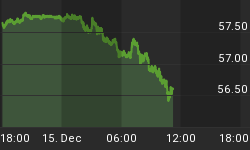The following is a summary of my post-CPI tweets. You can follow me @inflation_guy.
-
Core CPI +0.12%, a bit lower than expected.
-
Core 1.56% y/y
-
Both core services and core goods decelerated, to 2.2% y/y and -0.4% y/y. This is highly surprising and at odds with leading indicators.
-
Accelerating groups: Food/Bev, Housing, Med Care (63.9%). Decel: Apparel, Transp,Recreation, Educ/Comm (32.7%). "Other" unch
-
Primary rents fell to 2.82% y/y from 2.88%, OER 2.51% from 2.52%.
-
Primary rents probably fell mainly because of the rise in gas prices, which implies the non-energy rent portion is lower.
-
...but that obviously won't persist. It's significantly a function of the cold winter. Primary rents will be well into the 3s soon.
-
Household energy was 0.7% y/y at this time last year; now it's 5.5%. Again, that slows the increase in primary rents
-
Medical Care moved higher again, slowly reversing the sequester-induced decline from last yr. Drugs +1.86% y/y from 0.91% last month.
-
Core ex-housing leaked lower again, to only 0.84% y/y. Lowest since 2004. If you want to worry about deflation, go ahead. I don't.
-
The Enduring Inflation Angst Index rose to -0.51%, highest since Nov 2011 (but still really low).
I must admit to some mild frustration. Our call for higher primary rents and owners' equivalent rents has finally been shown to be correct, as these two large components of consumption have been heading higher over the last few months (the lag was 3-4 months longer than is typical). But core inflation, despite this, has stubbornly refused to rise, as a smattering of small-but-important categories - largely in the core goods part of CPI - are weighing on the overall number.
It is also almost comically frustrating that some of the drag on core CPI is happening because of the recent rise in Natural Gas prices, which has increased the imputed energy component of primary rents. As a reminder, the BLS takes a survey of actual rents, but since utilities are often included in rental agreements the BLS subtracts out the changing value of that benefit that the renter gets. So, if your rent last December was $1,000, and your utilities were $100, and your rent this month is still $1,000 but utilities are $125, then the BLS recognizes that you are really paying $25 less for rent. Obviously, this only changes where price increases show up - in this example, overall housing inflation would be zero, but the BLS would show an increase in "Household Energy" of 25% and a decline in "Rent of Primary Residence" of 2.78% (which is -$25/$900). But "Household Energy" is a non-core component, while "Rent of Primary Residence" is a core component...suggesting that core inflation declined.
There isn't much we can do about this. It's clearly the right way to do the accounting, but because utility costs vary much more than rental costs it induces extra volatility into the rental series. However, eventually what will happen is either (a) household energy prices will decline again, causing primary rents to recover the drag, or (b) landlords will increase rents to capture what they see as a permanent increase in utilities prices. So, in the long run, this doesn't impact the case for higher rents and OER - but in the short run, it's frustrating because it's hard to explain!
Now, core inflation outside of housing is also stagnant, and that's surprising to me. Apparel prices have flatlined after increasing robustly in 2011 and 2012 and maintaining some momentum into mid-2013. Ditto for new cars. Both of those series I have expected to re-accelerate, and they have not. They, along with medical care commodities, are the biggest chunks of core goods in the CPI, which is why that series continues to droop. However, medical care commodities - which was driven lower in 2013 due to the effect of the sequester on Medicare payments - is starting to return to its prior level as that effect drops out (see chart, source BLS).

We will see in a few hours what happens to median inflation. My back of the envelope calculation on the median suggests median CPI might actually rise this month in reverse of last month.
You can follow me @inflation_guy!
Enduring Investments is a registered investment adviser that specializes in solving inflation-related problems. Fill out the contact form at http://www.EnduringInvestments.com/contact and we will send you our latest Quarterly Inflation Outlook. And if you make sure to put your physical mailing address in the "comment" section of the contact form, we will also send you a copy of Michael Ashton's book "Maestro, My Ass!"
















